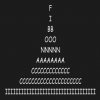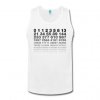From my learning so far -
Yes, Jeremy, a 2:1 ratio is good, but a 1:6 or 1:7 tends to be more pleasing to the "eye!"
I know that conventional knowledge is that the golden ratio tends to be very pleasing. My issue comes with the idea that if you don't relate your parts to small integer ratios (or the special case of the golden ratio which happens to be an irrational number) then your piece won't look quite right.
When I measure things that are supposed to be based on the golden ratio they tend to be a bit off, yet they look perfectly fine. I argue that the same thing applies to all proportions. There doesn't seem to be a real need to get our your dividers and step off to get the ratios dead on. As long as it is reasonably close, then it seems to be ok.
Really extreme cases where proportions are really bad can stand out. Think of a little tiny box made to hold a deck of cards, but the sides of the box are 3/4" thick. That would look bad. As long as you can avoid these really bad proportions, I am not so sure the rest really makes a difference.
Many years ago, I went on a quest to find out what "harmony" is (relating to music). A quick search will return definitions such as "notes that sound good together are said to be in harmony". My engineering background did not know how to handle this idea. My first thought was, "Who gets to decide what notes sound good together?". It seemed like personal preference like "I like coke better than pepsi". A bit more research shows that many cultures have independently came up with very similar ideas of "what notes sound good together" so there does appear to be something to it.
From a mathematical point of view (now the engineer in me gets happy), it turns out the notes that are in harmony have small integer relationships to each other. (An octave is 2:1 and is the most harmonious, so much so that two frequencies with this relationship are defined by the same letter for the note (440Hz = A and 880Hz = A as well) Different pitch, but we call them both "A".
In music, small errors in the relationships of notes can be detected quite easily because beat notes will be created. I am not so sure the same kind of indicator exists for proportions. Again, the really bad ones are obvious, but small "proportional errors" probably will not be noticed unless someone goes looking for them with a pair of dividers.













